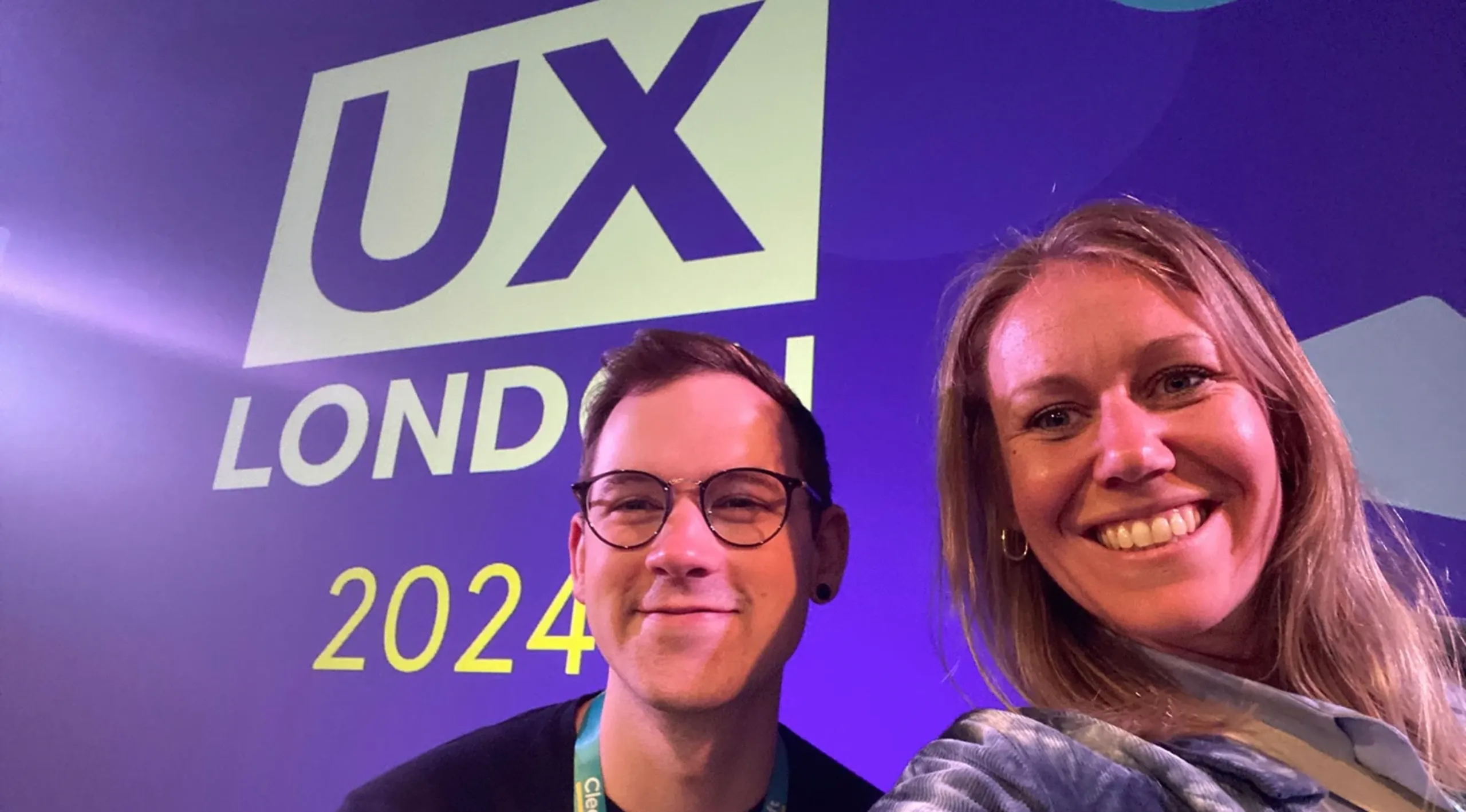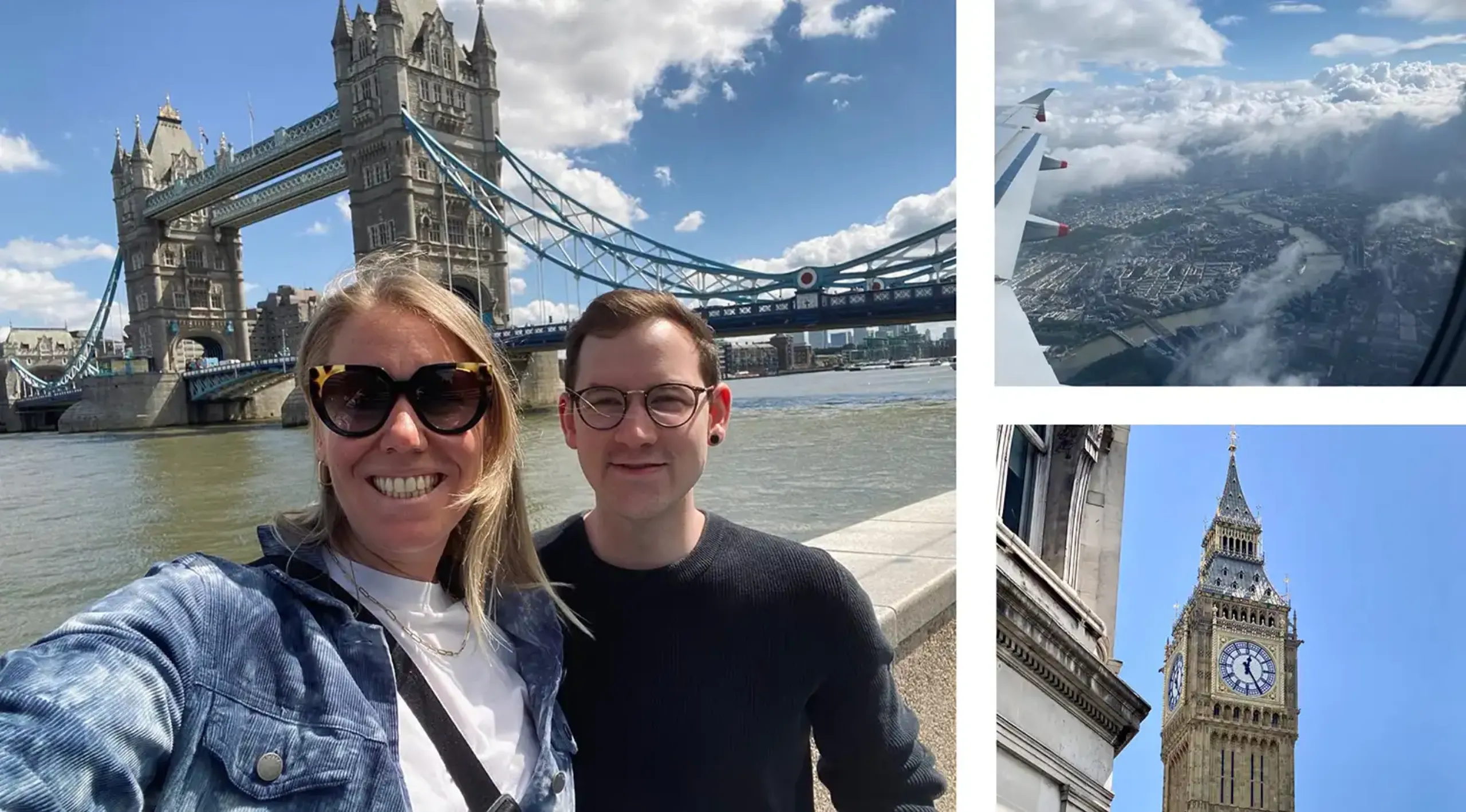02.07.2024
Author: Lukas Ebnöther
It was awesoooome! That's exactly how the UX London conference can be summarized in three words. Three days full of exciting talks, interactive workshops and interesting conversations. And of course, London showed itself from its best - for England untypically sunny - side. But now let’s move on to the details and why the conference was so great:

Day 1 - UX research
The conference was structured along the lines of a project process. The first day was dedicated to the topic of UX research. There were four exciting talks in the morning, interactive workshops in the afternoon and a great closing talk at the end of the day.
The closing talk by Rhama Gheerawo entitled «The human touch» was particularly inspiring. He talked about designing products for humans and not primarily for users. In order to achieve this, it is more important to consider all aspects in the research phase and find creative solutions.
An interesting example:
He cited the «Foyle Bubbles» concept as an example - Foyle being a river in Ireland. Unfortunately, many suicides occur on this riverbank. The «Foyle Bubbles» were designed to reduce the suicide rate. These are interactive and physical pods that can be placed around the river. They are flexible and can be used as art installations, small stores, etc. They are intended to promote the community and an awareness of togetherness. In addition, these bubbles can interact directly with people and offer them help when they are needed. Thanks to UX Research, a very interesting concept was created.
Day 2 - Product Design
The second day also started with four exciting presentations in the morning, talking mainly about the effective product. The main focus was on how to test a product properly and ensure that the planned features are well received. The presentation on «Validation Testing» was particularly exciting. Here we learned about a new method, namely the «fake door». This method helps you finding out with little effort whether a new feature should be implemented at all.
A concrete example:
An online store is considering introducing a new product category - «eco-friendly household goods». By using a «fake door», i.e. a link or button for this new category on the website, the interest of users can be measured before actual resources are planned for the implementation. The «fake door» method makes it possible to test interest by offering users an option that is not yet fully implemented. This makes it possible to evaluate how often this link is clicked on and how if people are actually interested.

Day 3 - Design Systems
The third day focused on design systems. Here the conference started with Brad Frost and a controversial talk entitled «Is Atomic Design dead?». Spoiler: Of course not - but there are some new approaches to design systems and their individuality.
Specifically, he addressed the question of why design systems are always being built and created anew, even though they basically consist of the same components everywhere. He spoke about a «Global Design System», which should consist of customizable web components - a very exciting approach that has given us something to think about. You can read more about this on Open-UI.
After the four morning talks, it was already time for us to say goodbye again and we made our way to the airport. High above the clouds, we were able to review the great conference and sort out our thoughts.
Wrap up UX London 2024
We are now back in our day-to-day work, full of new ideas, methods and thoughts and are trying to sharpen our inspirations and anchor them in our processes. We're on fire!
London tourist moments:

